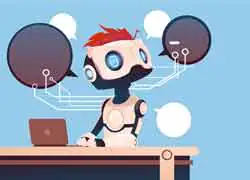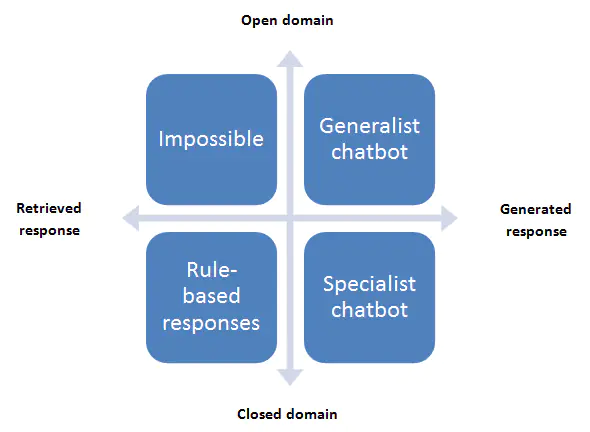
Chatbots are an increasingly important paradigm for HR. Instead of having to create complex designs and time-consuming user interfaces, chatbots allow the HR function to integrate process workflows, FAQs, documentation, feedback and ticketing systems into a single integrated interface. With advances in AI technology and the creation of better AI tools, it is increasingly becoming possible to integrate even more HR functionality into the chatbot paradigm.
Currently, there are two types of chatbots:
1. Specialist chatbots: These bots are built specifically to achieve a particular purpose and can only accept specific inputs.
2. Generalist chatbots: These bots are built to be able to handle all user inputs and wrap a very large amount of diverse functionality into a single user interface.
Some of the key differences between these types of chatbots are:
| Parameter | Specialist | Generalist |
| UI/UX | Combination of text and GUI | Purely text based |
| Interpretation | Pattern-matching and static programming | NLP and AI |
| Action | Defined workflows triggered by user inputs | Workflow created by user input, can vary depending on input |
| Integration | Closely integrated with existing tech stack | Layered on top of existing tech stack with defined interfaces |
| Client interface | Requires specialized interfaces capable of handling GUI requirements | Can integrate with any chat application |
| Complexity | Simple to program and integrate | Difficult to program and integrate |
In order to efficiently create a chatbot with the largest possible utility, organizations must make decisions about the trade-offs between these types of bots and determine the extent of utility and flexibility of a bot. While ideally an HR function would hope to have the most generalist chatbot possible, this can often prove to be expensive, time-consuming and difficult to maintain. In order to provide users with maximum functionality while keeping costs and complexity low, a balance needs to be found between specialist and generalist functionality in order to provide the best possible experience. The distinction between specialist and generalist use cases is based on two metrics:
Response type: Responses can be either retrieval-based (i.e. retrieved from a set of stored responses) or generative (i.e. generated algorithmically)
Domain: Open-domain chatbots do not have a well-defined purpose and the user is allowed total liberty while interacting with them. Closed domain chatbots only respond to specific inputs and only have specific outputs.

By evaluating the contexts in which the chatbot is required to operate and identifying processes to execute, it is possible to build a single chatbot interface that provides the functionality of a generalist chatbot without the need for complex architecturing and training. To this end, the organization must first identify and model HR processes in sufficient detail. By gathering data from employee interactions with the system after deployment, incremental improvements in chatbot functionality can be made over time and will eventually lead to a fully-developed and fully-integrated chatbot.





